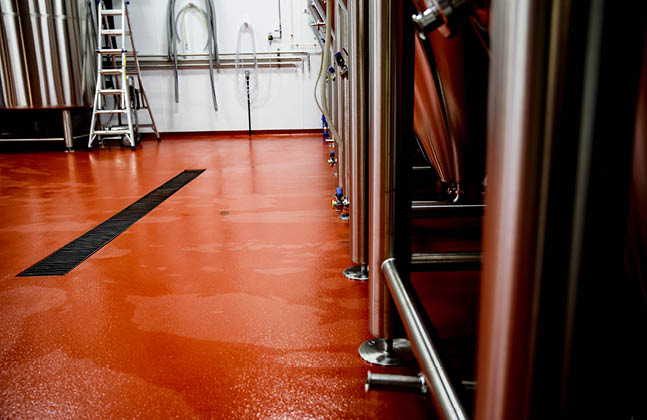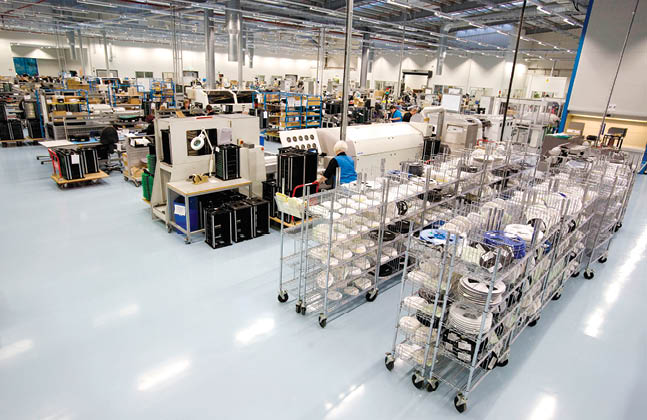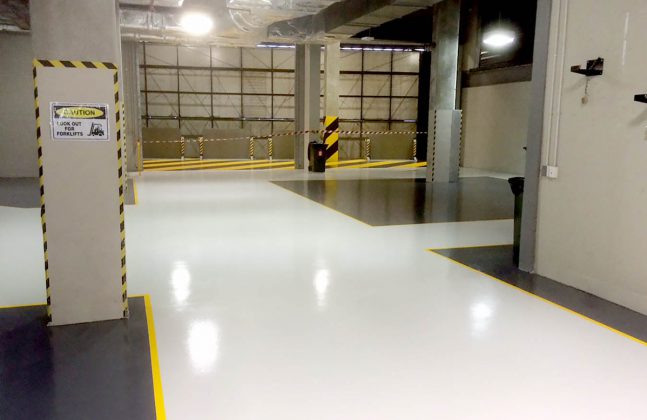This week hosts World Day for Safety and Health at Work, organised by the International Labour Organization. This year’s campaign aims to accelerate action to achieve Sustainable Development Goal target 8.8 of safe and secure working environments for all workers. To honour this day, we have chosen to tackle five flooring safety features, from common hazards to how to prevent accidents from occurring in the work place.
Potential Hazards to Be Aware of
One area where the Safety and Health rating of a workplace can fall down is the quality of the environment that you work in, from the air that you breathe to the foundation that your workplace stands on. If a job requires staff to be standing for the majority of the day, the ground must be safe, with no hazards on the floor that could cause injury to employees or visitors. These hazards could be anything from cracks, uneven surfaces or other defects that could cause trips.

Before: Worn, uneven surface that could cause accidents
Replacing damaged flooring can reduce this risk. There are several joint-free resins that generate a smooth surface and a safe working environment. As well as being even, the type of flooring chosen can have other benefits to working environments, such as chemical or slip resistance; ideal for workplaces that encounter wet or potentially corrosive products.

After: Joint-free flooring with a seamless and safe surface
The risk of slipping is a potential hazard for multiple workplaces, from manufacturing sites to shopping centres. Whilst it is easy to think that this could just be a risk in spaces that use excessive water, for example wet processing sites or automotive washing areas, this is just as big a risk in retail environments where staff or shoppers could walk in water from damp weather conditions. In all of these scenarios, staff or members of the public are at risk of serious injury from slipping. To combat this, a flooring material with slip resistance can be the ideal solution.

Positive texture and anti-slip properties help in areas prone to wetness
Slip resistance is a prominent property of both Flowfresh HF and Flowfresh RT. These polyurethane screeds are made to use in wet areas that are subject to high volumes of traffic, as the matt, joint-free finish enhances traction underfoot to reduce the chance of slipping.
Another consideration when thinking of flooring in places of work is its impact on the goods that are produced. For example, electro-static discharge (ESD) can pose a threat to sensitive electronic equipment and in environments that handle volatile gases, powders, liquids or other substances it can even be a potentially dangerous ignition source. When subjected to regular traffic from people and wheeled equipment, such charges can quickly build up within a floor. To safely dissipate electrostatic charge to ground it faster than it accumulates, you can create a controlled electrostatic protected area using a specialist epoxy coating.

Anti-static properties in flooring is necessary is to dissipate electrostatic charge
Hazard Prevention
From the material that is chosen, to the colour that it is chosen in, all of these can help to reduce safety and health issues in the workplace. Choosing a flooring of one bold colour can make dropped items much more visible, reducing the risk of someone tripping over. To the same merit, different coloured flooring can be used to identify different zones of a site. This works particularly well in manufacturing plants, where one colour is used for the handling of one product, and a different colour floor is used for the handling of a different product. Separating these zones by colour can help to reduce contamination, or visually show a hazardous zone that should be avoided by all employees.

Coloured sections can be used to show walkways and hazardous zones
Finally, all work places should feature hazard signage to warn those present of any potential dangers. Training sessions on the meaning of all signs is incredibly important, and any rules regarding the signs should be adhered to.

Hazardous zones clearly shown with flooring design and caution signs
For more information on any of the flooring options shown above, or to discuss other safety and health features, please leave a comment below.
2 thoughts on “Top 5 Flooring Safety Features That You Should Know”
Comments are closed.






This is great. It’s really very important to follow all the flooring safety rules to avoid any accident and incidents.T hanks for providing such an informative article. I am glad that I came across such an amazing article. Thanks for sharing such a great article.
Floorings could also be very helpful as well, just for example the hazard floorings to know that you are not allowed or be aware of the areas that you need to watch out for.